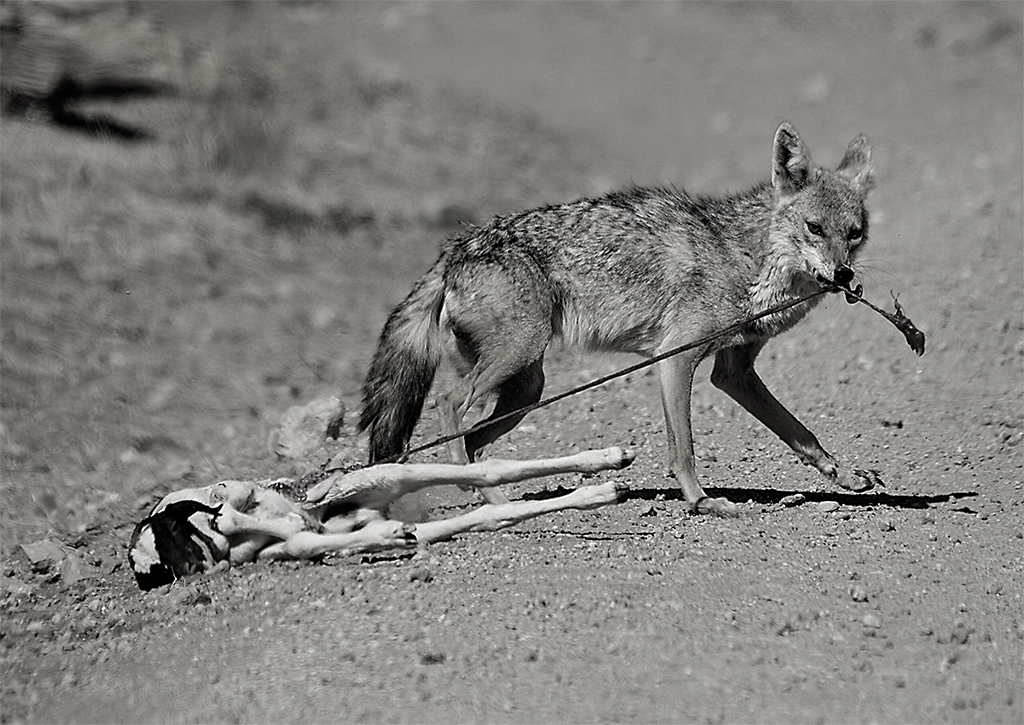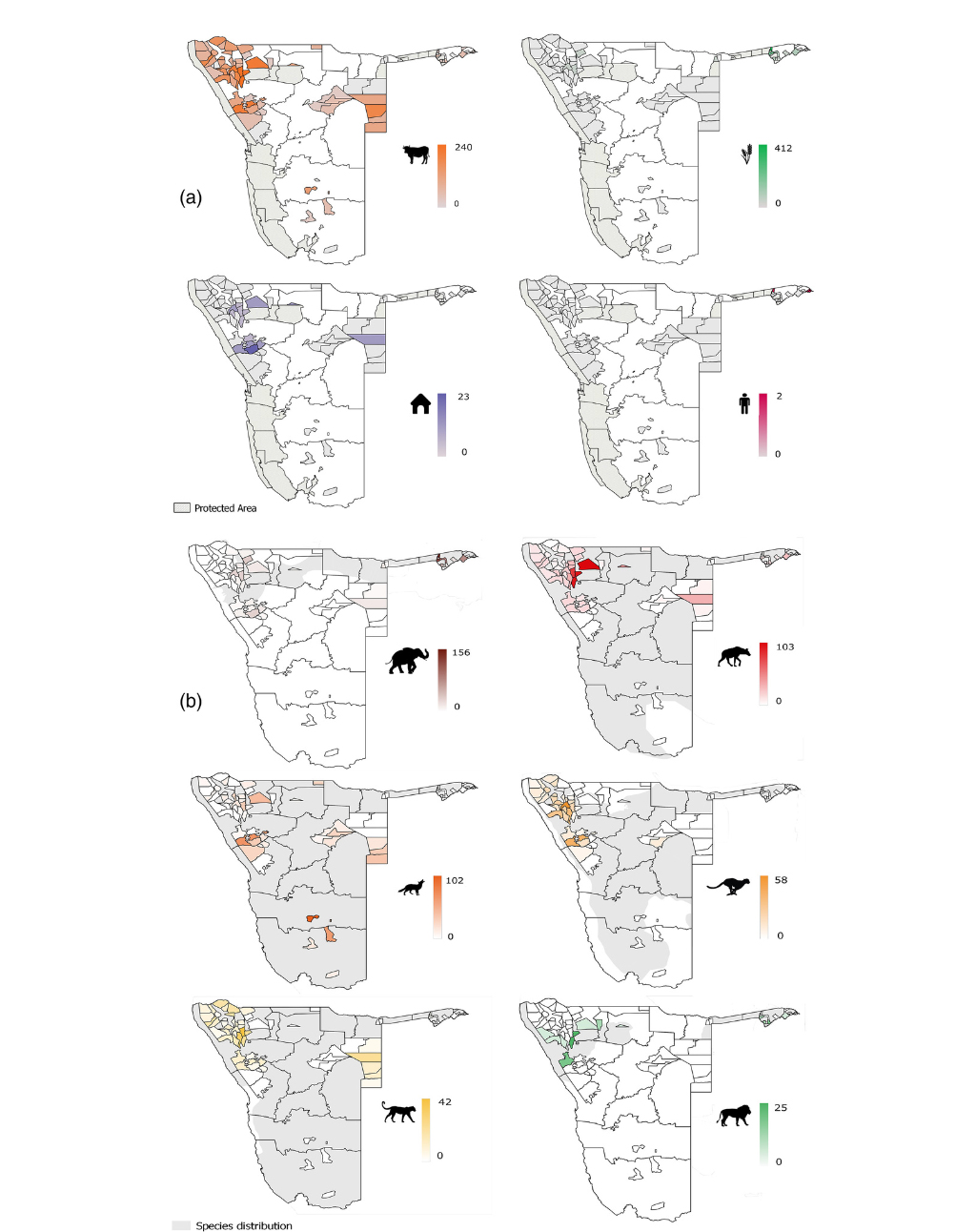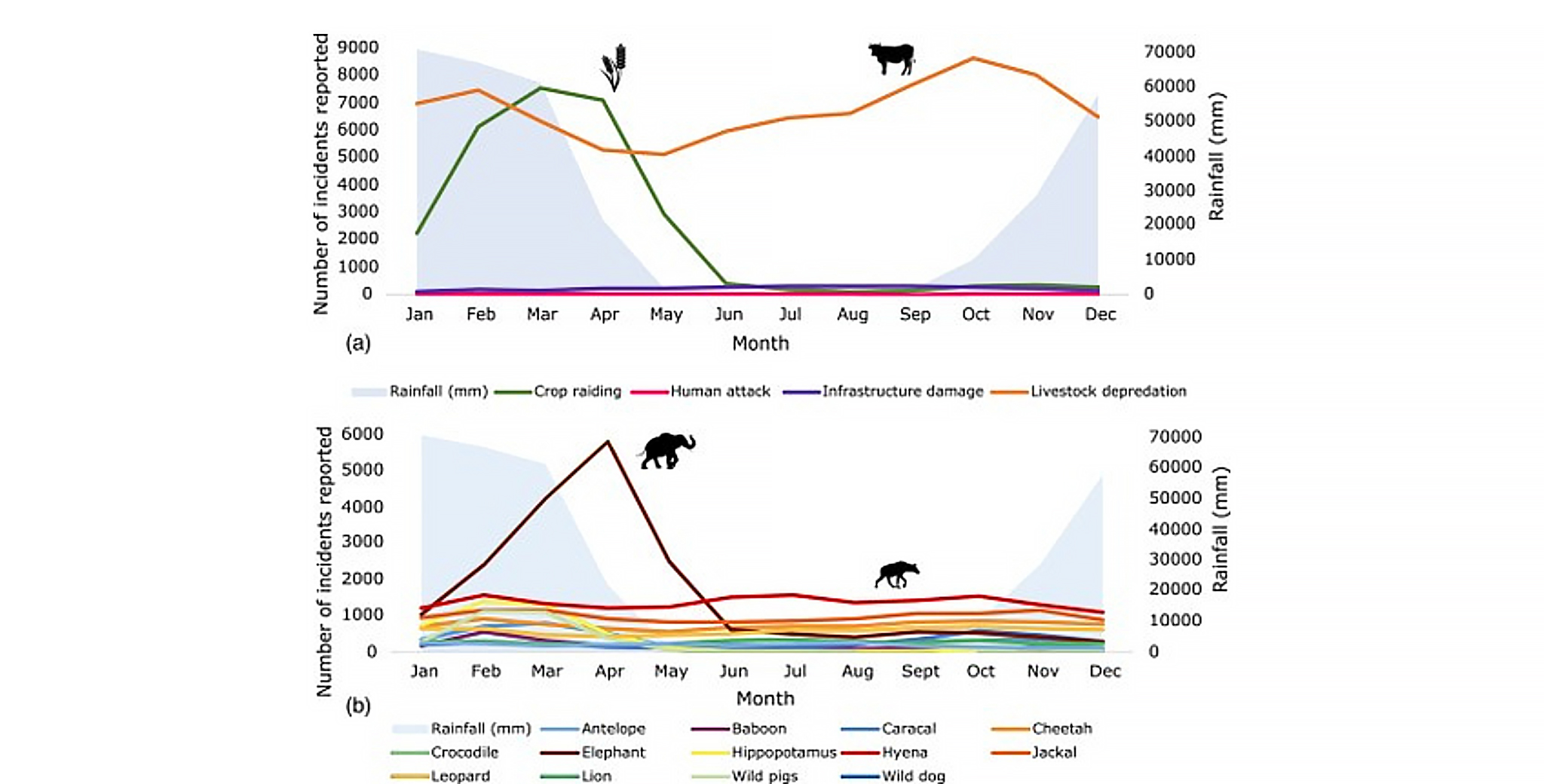
There are no one-size-fits-all or universal criteria for predicting and mitigating human-wildlife conflict. However, understanding long-term trends associated with different types and frequencies of conflict incidents is essential in designing mitigation policies and allocating resources. New research from Namibia examines human-wildlife conflict between 2001 and 2019 to identify some of these crucial trends.
Of the total 112,165 human-wildlife conflict incidents (HWIs) reported across the country, livestock depredation was the most common type of conflict (83%), and elephants were the species most associated with conflict incidents (22%). However, the researchers found marked variation between regions, as well as the significant impact of various factors, including distance to the nearest protected area, geography, conservancy size and, in particular, both annual and average monthly rainfall.
In arid north-western parts of Namibia, where extensive pastoralism is the main agricultural activity, livestock depredation and infrastructure damage ranked highest in frequency. In the wetter regions of the northeast, where higher rainfall and productive soils favour crop production, HWIs were more associated with crop raiding and attacks on people. A total of 1415 “problem animals” were killed or trapped across 79 Namibian community conservancies from 2001 to 2019.




The authors point to an overall lack of national spatio-temporal data as hampering the identification, targeting and prioritising of hotspots of wildlife damage throughout Africa. Given that resources to mitigate such conflict are invariably limited, they must be appropriately allocated to reduce livelihood losses. Hence mapping negative impacts and identifying drivers of high levels of damage is an essential first step in apportioning resources in a species- and area-specific manner.
Though they acknowledge that humans are the principal architect of negative interactions with animals, their results indicate the extensive adverse impacts wildlife can have on people and their livelihoods. Restricting wildlife to protected areas significantly limits wildlife abundance and distribution, but a coexistence model increases the risks of negative wildlife interactions. Thus, the study concludes that the “goal… is to both monitor these interactions and attempt to mitigate through appropriately scaled and affordable interventions which will improve tolerance towards wildlife and conservation objectives as a whole”.
Resources:
Tavolaro, F. M. et al. (2022) “Multispecies Study of Patterns and Drivers of Wildlife Impacts on Human Livelihoods in Communal Conservancies,” Conservation Science and Practice, 4(9)
Read about how emotions and cultural significance attached to wild carnivores strongly influence mitigation strategies for human-wildlife conflict.
To learn more about Namibian projects that aid in human-wildlife conflict mitigation, check out Desert Lion Conservation Trust and Cheetah Conservation Fund
To comment on this story: Login (or sign up) to our app here - it's a troll-free safe place 🙂.![]()






